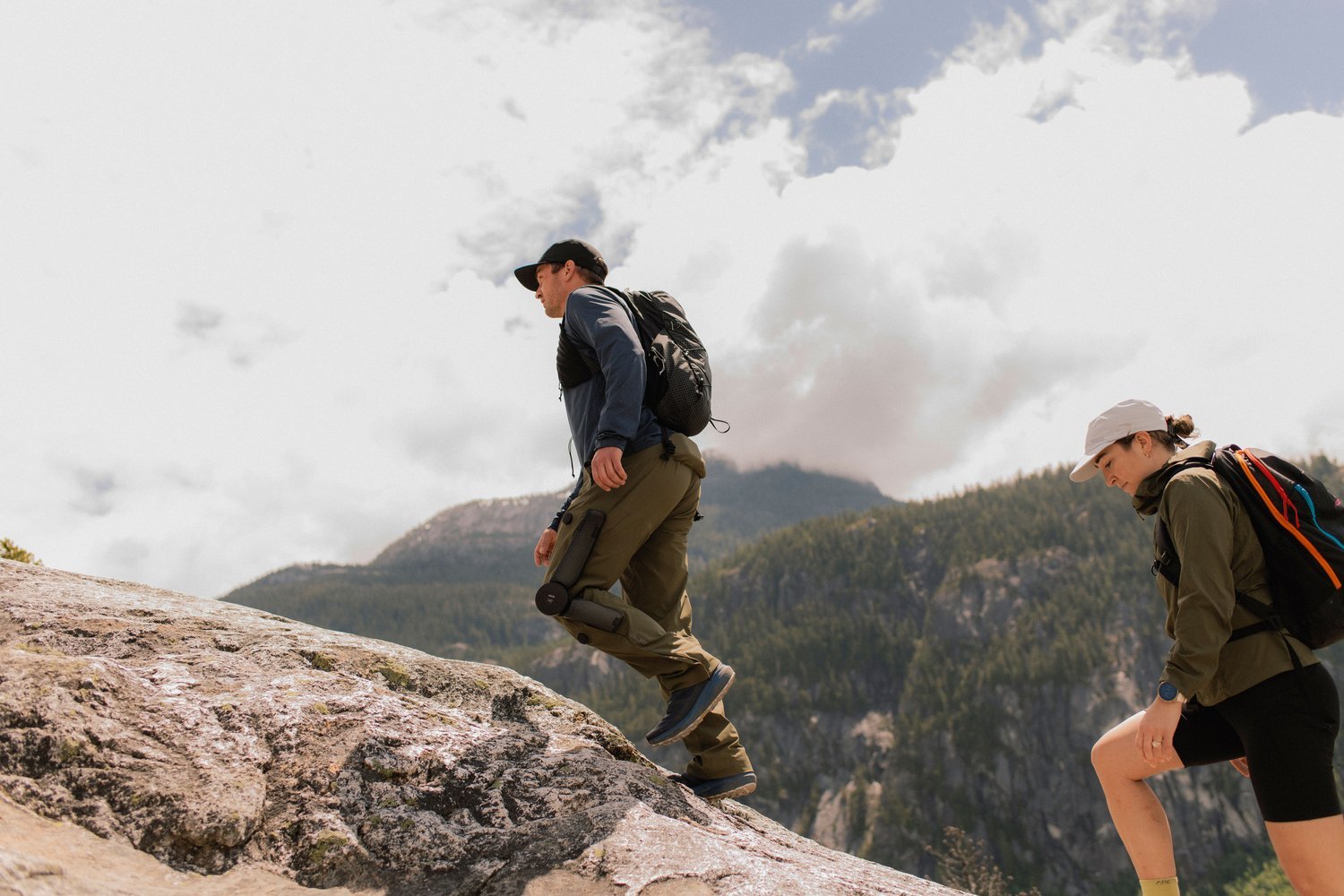This Content Is Only For Subscribers
The intersection of cutting-edge tech and outdoor performance gear has reached a new milestone. In a collaboration that quietly began several years ago, a well-known outdoor apparel brand and Skip — a spin off from Google’s X Lab — have launched the Mo/Go Hiking Pants, a product that’s turning heads in both the tech and trail communities

A Mechanical Edge, Disguised in Fabric
At first glance, the Mo/Go looks like any other high-end softshell pant. But hidden beneath the articulated knees and abrasion-resistant fibers are lightweight electric actuators, seamlessly integrated into the garment’s inner knee region. These miniature motors are designed to augment the extension phase of the stride—in other words, they give your legs a subtle push as you ascend.
The motor units are powered by a slim lithium battery embedded at the lower back of the waistband, with energy delivered via microcables woven into the pant seams. The pants automatically detect when the user begins an uphill motion using a combination of gyroscopic sensors and pressure feedback, kicking in assistance only during elevation gain. The tech, adapted from robotics-assisted mobility devices, boosts the wearer’s leg power by up to 40%.
The goal isn’t to turn hikers into cyborgs. Instead, it’s about offloading strain from the knees, reducing fatigue, and making climbs feel up to 30 pounds lighter, according to internal lab tests and field trials conducted during 2024. The support system is silent, responsive, and fully manual override is possible at any time.
The Veteran’s Verdict
We spoke with Tom R., a 62-year-old expedition guide and retired SAR volunteer with over three decades of backcountry experience in the Rockies and Cascades. He tested the Mo/Go pants last summer during a 12-day traverse across the Wind River Range.
“I was skeptical at first,” he admits. “I’ve seen a lot of gimmicks come and go — but this didn’t feel like a gimmick. After the first couple of miles on an uphill grade, I noticed that my knees weren’t barking like they usually do.”
Tom emphasized that the benefit wasn’t just for the hard climbs, but also the cumulative reduction in fatigue over a multi-day trip. “By day four, I wasn’t reaching for ibuprofen like I normally would. That was a first.”
Still, he has reservations about the direction the industry is heading. “I love innovation. But I worry that if we start relying too much on tech, we might lose the spirit of the outdoors — the grit, the simplicity. These pants should be a tool, not a crutch.”
Real Use, Not Hype
As outdoor enthusiasts increasingly demand products that offer tangible benefits — not just high-tech hype — items like the Mo/Go pants enter the scene at a critical moment. A 2023 survey by the Outdoor Industry Association found that 43% of U.S. outdoor participants over the age of 50 reported that joint discomfort limits their activity, with hiking and backpacking cited as the most affected. The same study noted a 20% increase in interest in assistive gear over the previous two years, particularly for aging users and rehabilitation patients.
While the Mo/Go’s price tag places it firmly in the high-end category, the value proposition may make sense for select users — especially those looking to extend their years on the trail or return after injury.
A Glimpse Into the Future
Whether smart apparel becomes commonplace or remains a niche luxury depends on many factors — durability, cost, real-world impact, and community adoption. But one thing is clear: outdoor gear is no longer passive. It’s responding to the user, adapting to the terrain, and challenging traditional definitions of self-reliance.
As Tom puts it: “If it helps people stay outside longer, hike farther, or hurt less — that’s a good thing. As long as we still earn our views.”



